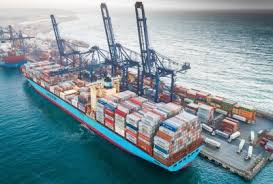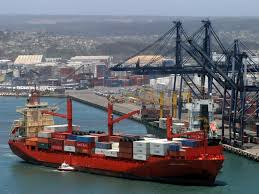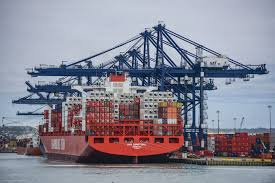What is the capacity of the Port of San Antonio?

What is the capacity of the Port of San Antonio?
What is the capacity of the Port of San Antonio? The Port of San Antonio stands as one of Chile’s most important maritime gateways, known for its impressive capacity to handle a diverse range of cargo.
Understanding the specifics of its capacity provides insights into its role in both national and international trade, showcasing its importance in the logistics landscape.
Overview of Port Capacity
The capacity of a port is often defined by several factors, including its physical infrastructure, the volume of cargo it can process, and its operational efficiency.
At the Port of San Antonio, a combination of these elements contributes to its reputation as a major player in the shipping industry.
The port’s ability to adapt and expand in response to market demands is crucial for its ongoing success.

Infrastructure and Facilities
The Port of San Antonio is equipped with state-of-the-art facilities designed to handle large volumes of cargo efficiently.
These include multiple container terminals, specialized loading and unloading equipment, and spacious storage areas.
Such infrastructure enables the port to accommodate various types of cargo, from containers to bulk materials, ensuring versatility in operations.
Container Handling Capacity
One of the most significant aspects of the Port of San Antonio is its container handling capacity.
The port is designed to handle millions of TEUs (Twenty-foot Equivalent Units) annually, positioning it among the leading container ports in Chile.
This capacity is crucial for supporting the growing demand for international shipping and trade.
Bulk Cargo Operations
In addition to containerized cargo, the Port of San Antonio also excels in bulk cargo operations.
This includes handling agricultural products, minerals, and other bulk materials that are essential to Chile’s economy.
The port’s specialized facilities and equipment allow for efficient loading and unloading of these types of cargo.
Adaptability and Expansion
The ability of the Port of San Antonio to adapt to changing market demands is a key factor in its capacity.
Ongoing investments in infrastructure and technology enable the port to expand its operational capabilities, accommodating larger vessels and increased cargo volumes.
Such adaptability ensures that the port remains competitive in the ever-evolving shipping industry.
Impact of Technology
Modern technology plays a vital role in enhancing the capacity of the Port of San Antonio.
Automation and advanced cargo tracking systems streamline operations, allowing for faster processing times and improved efficiency.
These technological advancements not only boost the port’s capacity but also enhance the overall customer experience for shipping companies.
Environmental Considerations
As the Port of San Antonio continues to grow, environmental considerations are increasingly becoming a focal point.
Efforts are being made to implement sustainable practices in cargo handling and transportation, aiming to minimize the port’s ecological footprint.
Balancing capacity growth with environmental responsibility is essential for the port’s long-term viability.
Economic Significance
The capacity of the Port of San Antonio is directly tied to its economic significance within Chile and the broader South American region.
The port facilitates trade and commerce, supporting countless jobs and contributing to the local and national economy.
Its role as a vital logistics hub cannot be overstated, making it a cornerstone of Chile’s economic infrastructure.
Future Growth Prospects
Looking ahead, the Port of San Antonio is poised for further growth in capacity as global trade continues to evolve.
Plans for additional investments in infrastructure and technology aim to enhance its operational efficiency, enabling it to handle even larger volumes of cargo.
These future developments will ensure that the port remains a key player in international shipping.
A Pillar of Maritime Trade
The capacity of the Port of San Antonio is a testament to its strategic importance in the maritime trade landscape.
With its advanced infrastructure, high container handling capacity, and commitment to adaptability, the port is well-positioned for continued success.
As it embraces the future, the Port of San Antonio will undoubtedly remain a crucial asset for Chilean trade and commerce.





Leave a Reply